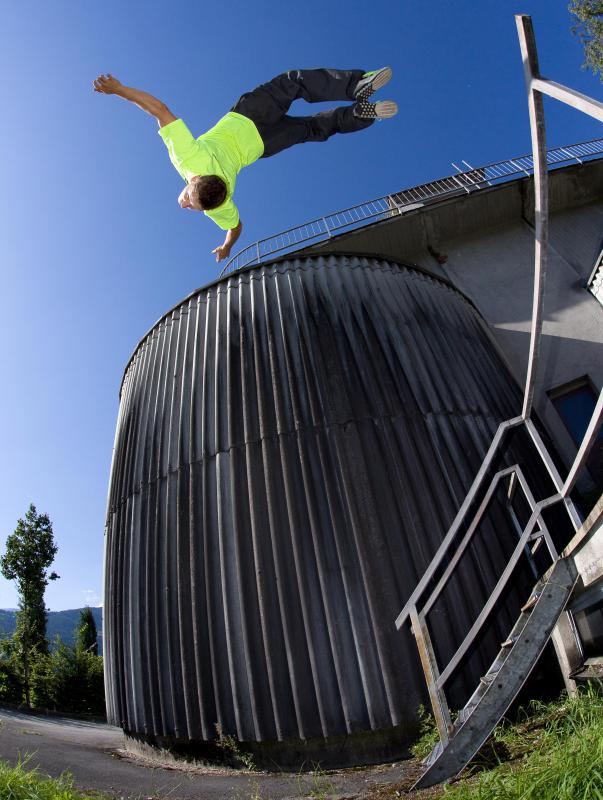At WiseGEEK, we're committed to delivering accurate, trustworthy information. Our expert-authored content is rigorously fact-checked and sourced from credible authorities. Discover how we uphold the highest standards in providing you with reliable knowledge.
What are the Best Tips for Training for Parkour?
Parkour is a sport that combines running, gymnastics, and general athleticism as participants try to complete urban courses in the most efficient way possible, using only their bodies to negotiate obstacles. Training for parkour is a comprehensive regimen that requires commitment over a long period of time. Cardiovascular, strength, and flexibility exercises are crucial, as well as coordination and mental training, are necessary to perform at the highest levels.
The sport of parkour exploded in popularity in the early 2000s and quickly became a fixture in action movie sequences and chase scenes. Born in the urban areas of France, parkour was embraced in cities across the world as a cheap, diverting method of physical and metal exercise. Participants, known as traceurs, takes advantage of existing structures and courses that are designed to take advantage of common urban obstacles such as stair rails, embankments, walls, poles, and playground equipment.

Free running, a related activity that emphasizes acrobatic tricks more than parkour, is considered to be a technically different discipline. Much of the training for parkour is the same as free running, and training for both begins and ends with cardio. A strong heart and lungs are fundamental for successful free runners, providing the endurance and pace to complete courses successfully.

Training for parkour also includes strength exercises. Since traceurs have only their bodies to use in navigating courses, it is incumbent on them to be able to react to obstacles with precise, efficient movements. There are a number of core movements that are frequently called into play during parkour, including jumps, pull ups, swings, and vaults. Each of these are compound exercises that activate several different muscle groups at once. To vault over a park bench, for instance, a traceur needs strong legs to launch himself into the air and strong arms to push himself over the top.
Flexibility and coordination also key for parkour. One of the tenets of the discipline is physical resiliency and avoidance of injury. Being able to rebound and roll off hard surfaces, spring up after falls, or stretch to grasp ledges without danger to muscles or ligaments are important and trainable skills. So too is being able to chain together these movements in a fluid manner, a trait that comes through practice and repetition.
Training for parkour is so beneficial that various military forces have adopted the same techniques for use in their own exercise programs. The United States Marine Corps, for example, has integrated parkour movements into training programs both as a way of exercise unto itself and as practice for moving about efficiently in urban terrain. Some of the best parkour athletes in the world have transitioned into second careers as consultants for military and law enforcement groups interested in such initiatives.
AS FEATURED ON:
AS FEATURED ON:












Discuss this Article
Post your comments